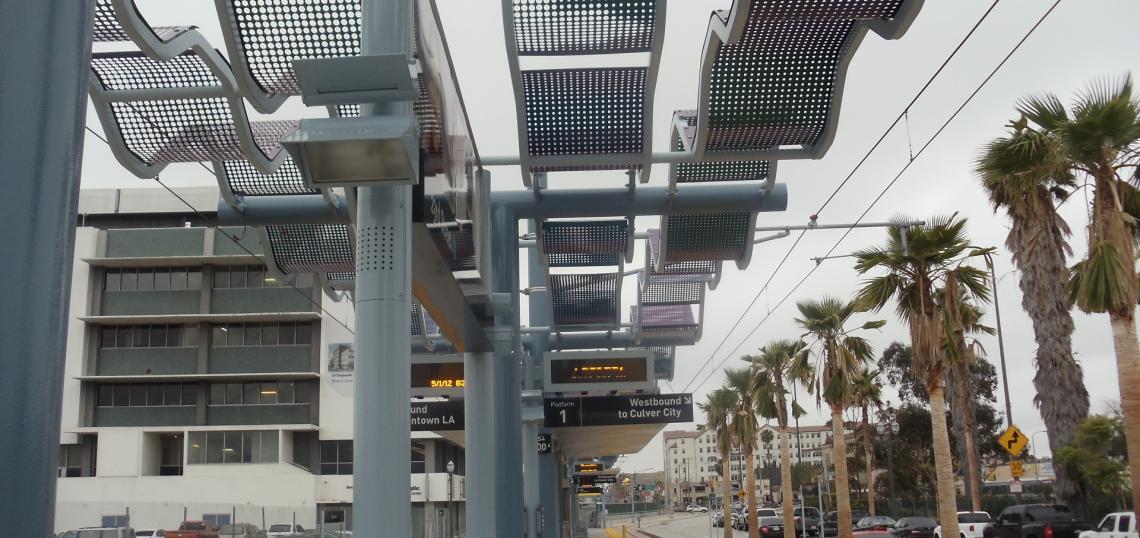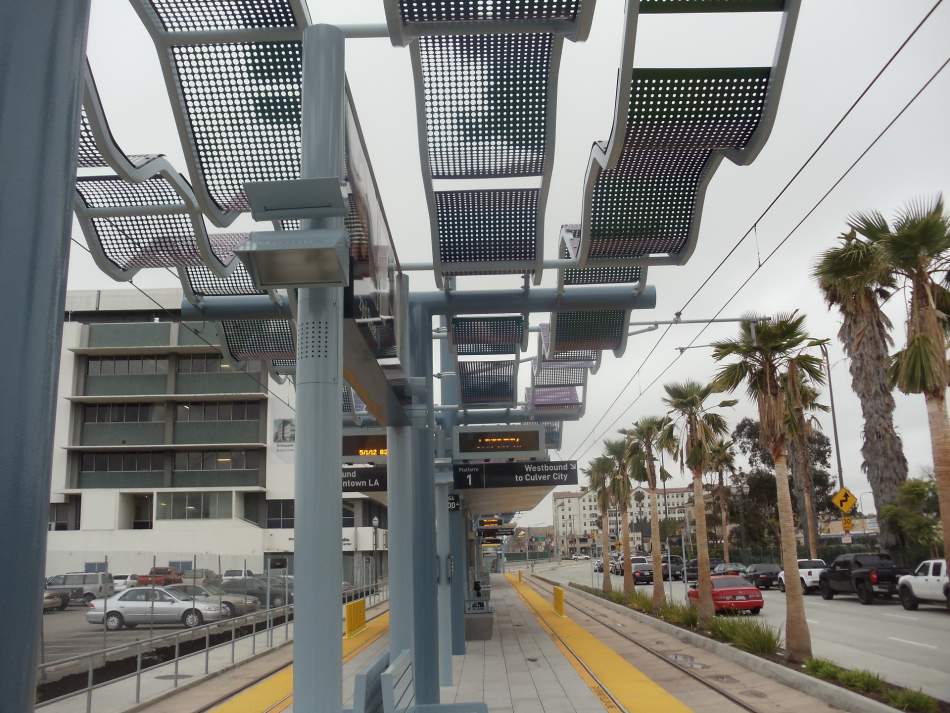Since opening in 2012, Metro's Expo Line has stood out as a rare success at time in which transit patronage has declined in Los Angeles County. But the light rail line, which runs predominantly at-grade between Downtown Los Angeles and Santa Monica, is frequently forced to stop for cross traffic at 22 ungated intersections along its route. But a fix may finally be in the works, according to a motion introduced last week by Los Angeles City Councilmember Mike Bonin.
The motion, if adopted, would instruct the Los Angeles Department of Transportation to maximize signal priority for the Expo Line at street crossings and report back to the City Council within 60 days on strategies to speed end-to-end travel times and improve on-time reliability by 90 percent.
"For our light rail system...traffic signals are a significant cause of delay," writes Bonin. "Because these signals do not respond in real time to trains, even a slight delay leaving the station can result in the train hitting a series of red lights, with a cascading impact on the line's operations."
The trains, according to Bonin's motion, can carry more than 250 passengers, but frequently must sit at red lights to wait for a handful of cars to make a left turn. Metro's estimates that signal delays can delay scheduled arrival times by as much as 15 percent.
"This is neither equitable nor efficient," writes Bonin. "These delays and resulting uneven train spacing have contributed to recent service issues on the Expo Line."
One of the most problematic sections of track runs along Flower Street between USC and Downtown, where the Expo Line faces multiple street crossings and interlines with the Blue Line in its approach to Pico Station and 7th Street/Metro Center. Metro installed a crossing gate at one of the most accident-prone intersections in 2017, and has studied the possibility of grade separation the entire stretch between Washington Boulevard and Pico Station.
Some of those recent service issues on the Expo Line have resulted from a recent 25 percent reduction to peak-hour service on the Expo Line, increasing headways from six to eight minutes. But after facing a deluge of social media criticism regarding overcrowded trains, Metro has since added additional trains in the morning and evening rush hours.
- Expo Line (Urbanize LA)








